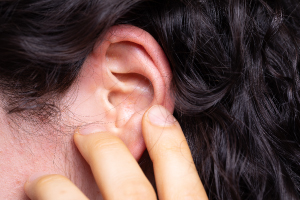

Fungal nail infections, medically known as onychomycosis, can be a persistent and frustrating condition affecting millions of people worldwide. While it may seem like a mere cosmetic concern, untreated fungal nail infections can lead to more serious complications. In this guide, we’ll explore the causes, symptoms, prevention strategies, and effective treatment options to help you regain healthy and happy nails.
What is Fungal Nail Infection?
A fungal nail infection, or onychomycosis, is a common condition characterised by the invasion of fungi, such as dermatophytes or yeasts, into the nails. This infection typically begins at the nail’s edge and can lead to changes in colour, thickness, and texture, often causing nails to become discoloured, brittle, and separated from the nail bed.
Commonly found in warm and moist environments, the fungi responsible for nail infections thrive in places like swimming pools and communal showers. While often not a serious medical threat, fungal nail infections can be persistent and may require treatment, ranging from topical and oral antifungal medications to innovative therapies like laser treatments, depending on the severity and individual response.
Why Does Fungal Nail Infection Develop?
A fungal nail infection is caused by overgrowth of fungus in, under, or on the nail. Since fungi thrive in warm, humid conditions, they tend to naturally overpopulate in these kinds of settings. Nail infections can be brought on by the same fungi that cause ringworm, jock itch, and athlete’s foot. Infections in your nails can result from fungi that are already on or inside of your body. It’s possible that you got a fungal infection if you’ve come into contact with someone else who has fungal nail infection.
Types of Nail Infections
Several types of nail infections can affect the fingernails and toenails. Here are some common ones:
1. Distal or Lateral Subungual Onychomycosis
The most prevalent type is Distal Subungual Onychomycosis (DSO), primarily caused by dermatophytes such as Trichophyton rubrum. DSO typically originates from the nail bed, progressing to the underside of the nail plate. Common symptoms include yellowing, thickening, and eventual crumbling of the affected nail. This form progresses gradually, making early detection crucial for effective treatment.
2. White Superficial Onychomycosis
White Superficial Onychomycosis (WSO) is characterised by the involvement of fungi like Trichophyton mentagrophytes or Trichophyton tonsurans, affecting the top layers of the nail plate. Recognised by chalky, white patches on the nail surface, WSO is distinguishable from other types by its superficial nature. Soft, white spots may appear on the nail, spreading if left untreated.
3. Proximal Subungual Onychomycosis
Proximal Subungual Onychomycosis (PSO) is less common and often associated with immunocompromised individuals. In PSO, the infection initiates at the cuticle, impacting the centre part of the nail bed. Initial symptoms manifest as white or yellow spots near the cuticle, gradually progressing towards the nail tip. This type of onychomycosis requires careful attention, particularly in those with compromised immune systems.
4. Candidal Onychomycosis
Candidal Onychomycosis, caused by yeast of the Candida species, represents a less frequent variety of fungal nail infections. Infections caused by Candida may induce swelling, redness, and softening of the nail. Though less common, it requires distinct diagnostic considerations due to its unique characteristics.
Symptoms of Nail Fungus
Just knowing what causes nail fungus and its types is not enough. You need to be aware of its symptoms. Nail fungus, or onychomycosis, can manifest with various symptoms that affect the appearance and texture of the nails. The specific symptoms may vary depending on the type of fungal infection and its severity. Nail fungus symptoms include having a nail or nails that are:
- Thickened
- Discoloured
- Brittle, crumbly, or ragged
- Misshapen
- Separated from the nail bed
- Smelly
Possible Remedies of Nail Fungus
The treatment of nail fungus encompasses various approaches depending on the severity of the infection, the type of fungus involved, and individual health considerations.
One common avenue of nail fungus treatment involves the use of topical antifungal medications. Over-the-counter options like antifungal creams, ointments, and nail lacquers can be applied directly to the infected nails. These may contain active ingredients such as clotrimazole, terbinafine, or ciclopirox. If over-the-counter solutions prove insufficient, a healthcare professional may prescribe stronger topical antifungal medications.
In moderate to severe cases, oral antifungal medications are often considered ideal. Prescription medications like terbinafine, itraconazole, or fluconazole may be prescribed, typically requiring weeks or even months of treatment. Oral medications are particularly effective for addressing the infection systemically, reaching the fungi through the bloodstream. However, they may carry a risk of side-effects and require monitoring by a healthcare provider.
Conclusion
Fungal nail infections, though common, are manageable with knowledge, preventive measures, and a well-informed approach to treatment. Seeking professional advice, adopting preventive strategies, and maintaining a proactive stance can help individuals overcome this persistent challenge and restore the health and aesthetics of their nails.




